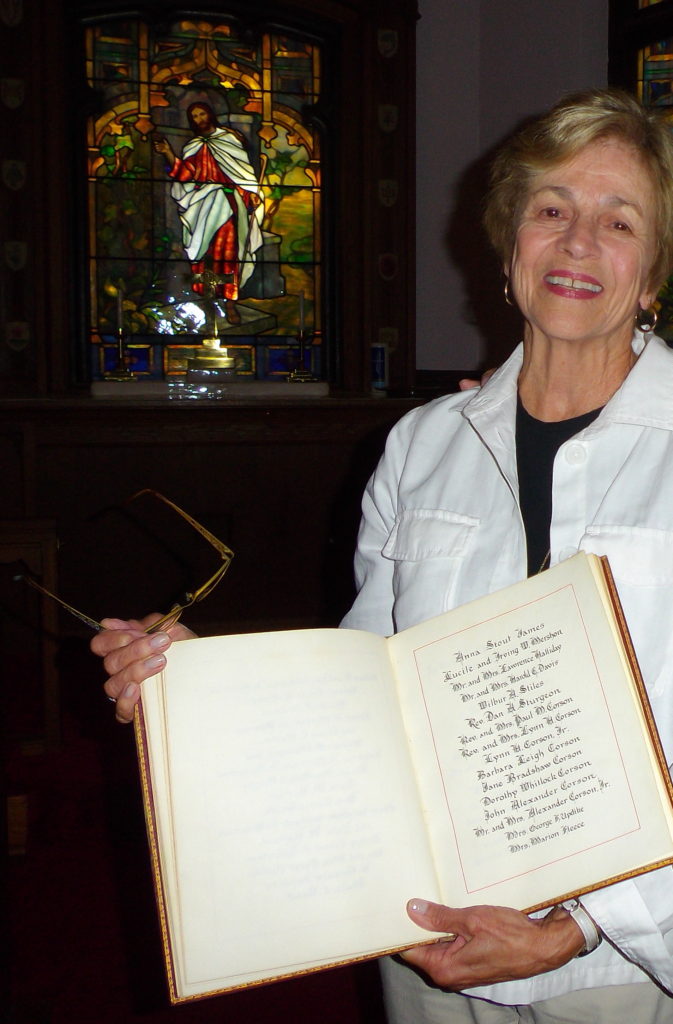 On September 12, two daughters with ancestral roots at Princeton United Methodist Church paid a visit to the chapel dedicated to the pastors in their family. Jane Corson Henry and Dorothy Corson Jones are the great granddaughters of Rev. Pennington Corson
On September 12, two daughters with ancestral roots at Princeton United Methodist Church paid a visit to the chapel dedicated to the pastors in their family. Jane Corson Henry and Dorothy Corson Jones are the great granddaughters of Rev. Pennington Corson 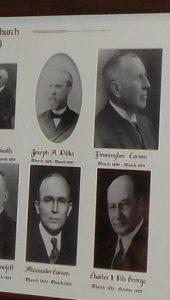 (who served 1899-1904), granddaughters of Rev. Alexander Corson (1929-1932), and daughters of Rev. Lynn Corson. ‘All were pastors here; their father served this church from 1942 to 1950.
(who served 1899-1904), granddaughters of Rev. Alexander Corson (1929-1932), and daughters of Rev. Lynn Corson. ‘All were pastors here; their father served this church from 1942 to 1950.
The parsonage on Hamilton Avenue was filled with five children; the eldest and youngest were boys. Jane was the middle daughter and Dorothy the youngest daughter.By a grace-filled coincidence, Barbara Fox and Judy Algor happened to be in the building and able to show them around. and then go to lunch.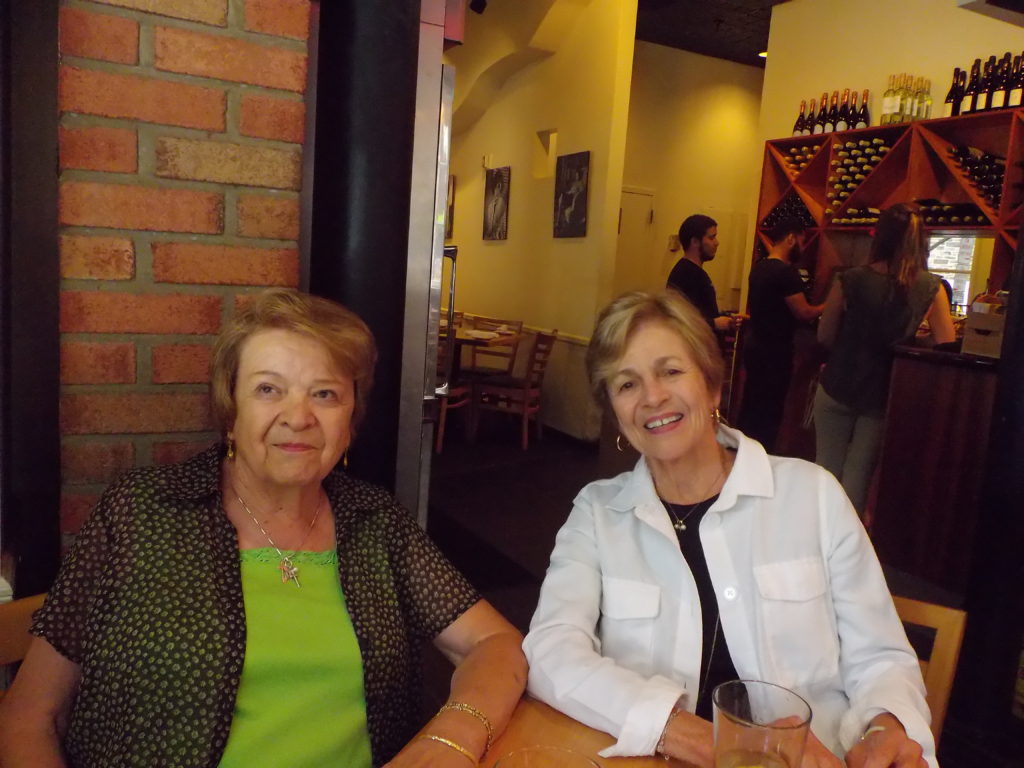
The four of us agreed that it was a blessing to meet each other — the PUMC members to learn about the past, and the Corson sisters to see how their father’s work carried into the future.
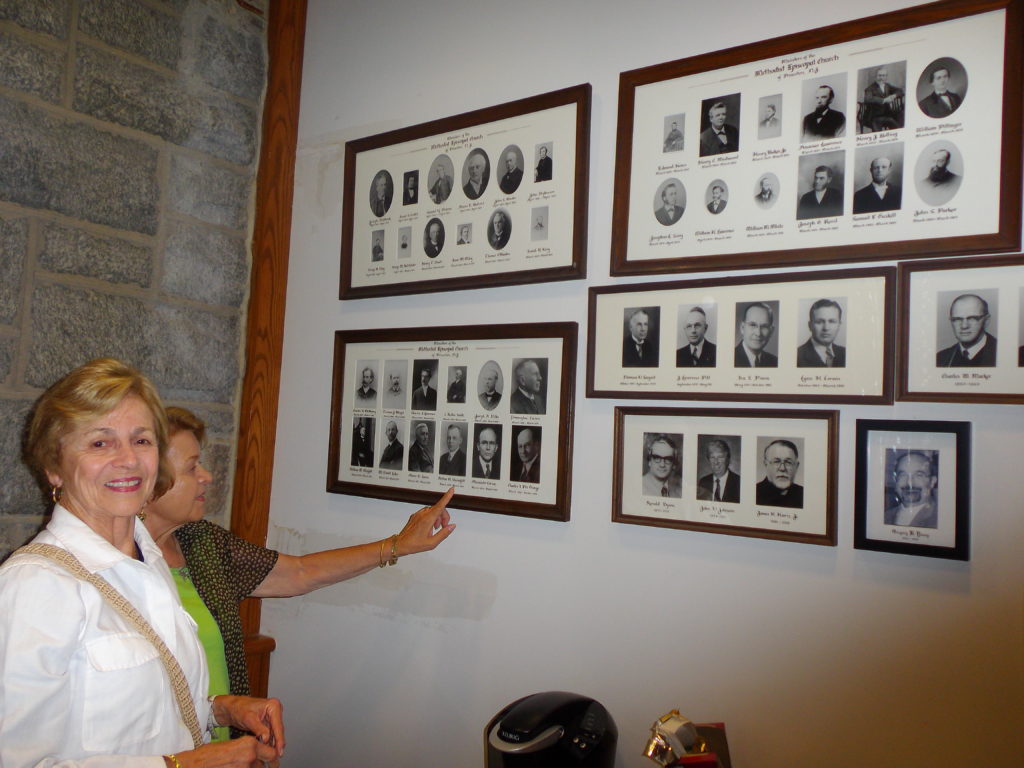
The sanctuary, they say, looked just as as beautiful as before. They remember the “back stairs” that lead from the Sanford Davis room to the Sunday School classes held in little curtained side rooms of what is now our renovated Fellowship Hall. They admired the music room mural and the library with its “photo wall” depicting three Pastor Corsons.
In 1948, the sisters recalled, Princeton schools were desegregated under “the Princeton Plan” by Chet Stroup, a PUMC member who was superintendent of schools. Instead of attending middle school in the 185 Nassau School, they walked to the school on Quarry Street that is now The Waxwood apartments. Their mother did not drive, so they walked everywhere and ‘hung out’ on the university campus, often rollerskating on the slate sidewalks.
When their father accepted a call to Haddonfield United Methodist Church, Jane was a freshman at Princeton High. Eventually they would attend Methodist schools; Jane and her older sister Barbara trained as nurses at Methodist Hospital in Philadelphia, and Dorothy went to Wesley College in Dover, Delaware and had a career in retail.
As “Preacher’s Kids,” they remember being always on display, at church, in the community, and at home. Their mother always cooked extra for the guests their father would invited, especially on Sunday.
“Our father would get us up in the morning chanting ‘This is the day the Lord has made, let us rejoice and be glad in it,’ and we would want to throw pillows at him,” says Dorothy.
Dinner — always a family affair and always at 6 p.m. — was always followed by their father reading the passage from the Upper Room. Some family traditions continue. As they raised their own families, they would begin each meal by holding hands and saying the familiar grace.
For all we eat, for all we wear
For all we have, everywhere,
We thank thee, Father. Amen.
Says Jane: “We were born with our faith, we were raised with it, and we lived by it. But — I wish I had paid more attention to Sunday School when I was here!”
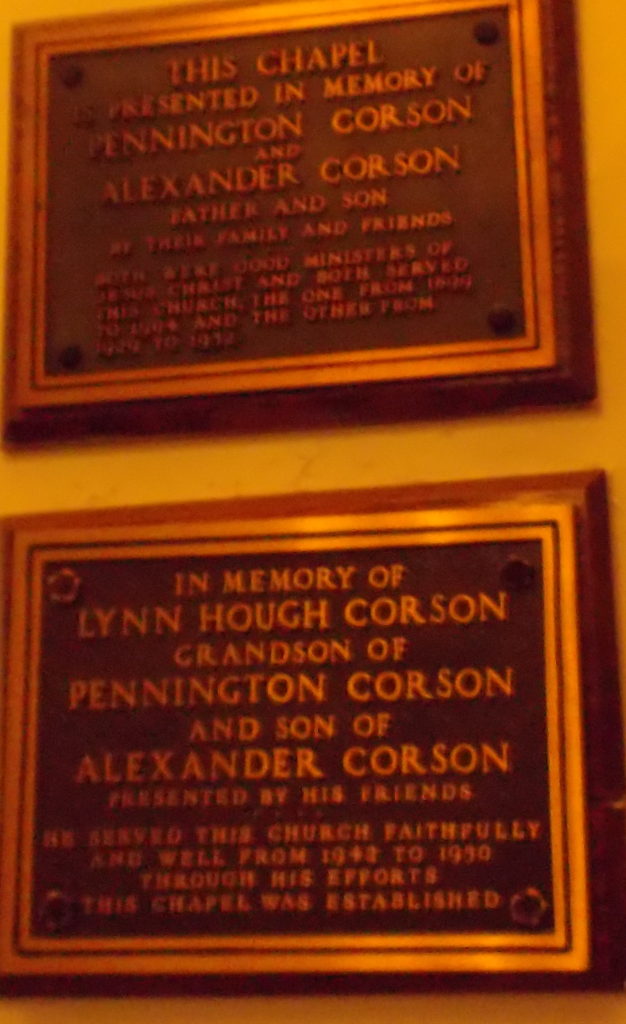
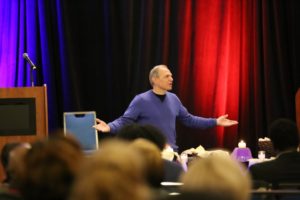 Bishop John Schol calls upon each church in the Greater New Jersey Annual Conference to spot potential leaders and prayerfully call, equip, challenge and support them. “I challenge each of our congregations to give permission for your pastor to be more apostolic and to continue to support and challenge them to develop their leadership to lead the congregation to engage in and grow more fully the mission.”
Bishop John Schol calls upon each church in the Greater New Jersey Annual Conference to spot potential leaders and prayerfully call, equip, challenge and support them. “I challenge each of our congregations to give permission for your pastor to be more apostolic and to continue to support and challenge them to develop their leadership to lead the congregation to engage in and grow more fully the mission.”
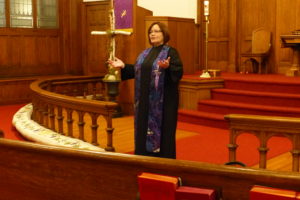 Dear Friends,
Dear Friends,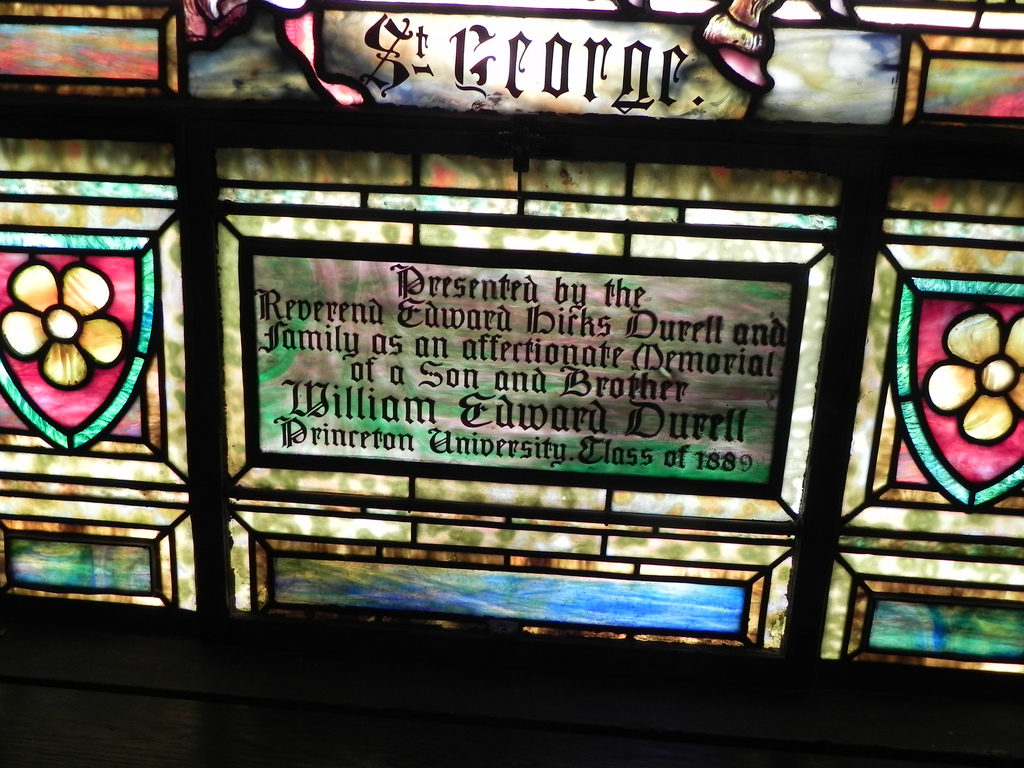 Awestruck by the Tiffany window of St. George and the Dragon in the balcony of Princeton United Methodist Church,
Awestruck by the Tiffany window of St. George and the Dragon in the balcony of Princeton United Methodist Church, 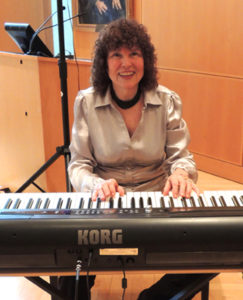 Christians sing more than any other religion, especially at Christmas time when carols tell the joy of Christ’s birth. And on Sunday, December 11, our carols will ring out throughout the day.
Christians sing more than any other religion, especially at Christmas time when carols tell the joy of Christ’s birth. And on Sunday, December 11, our carols will ring out throughout the day.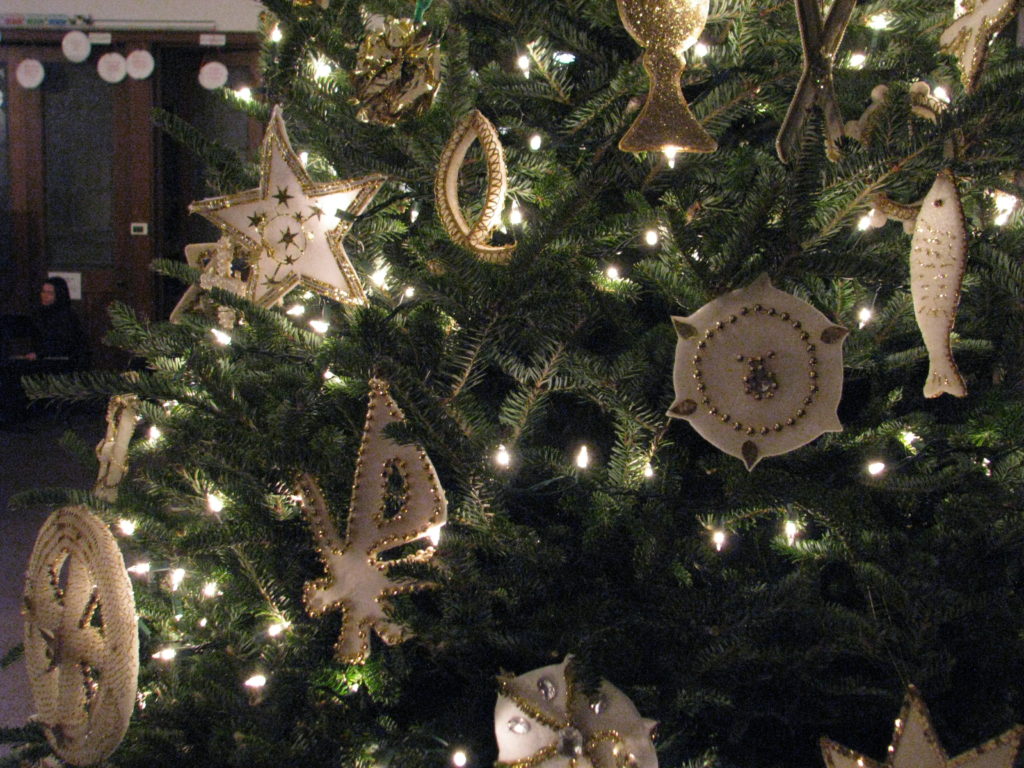
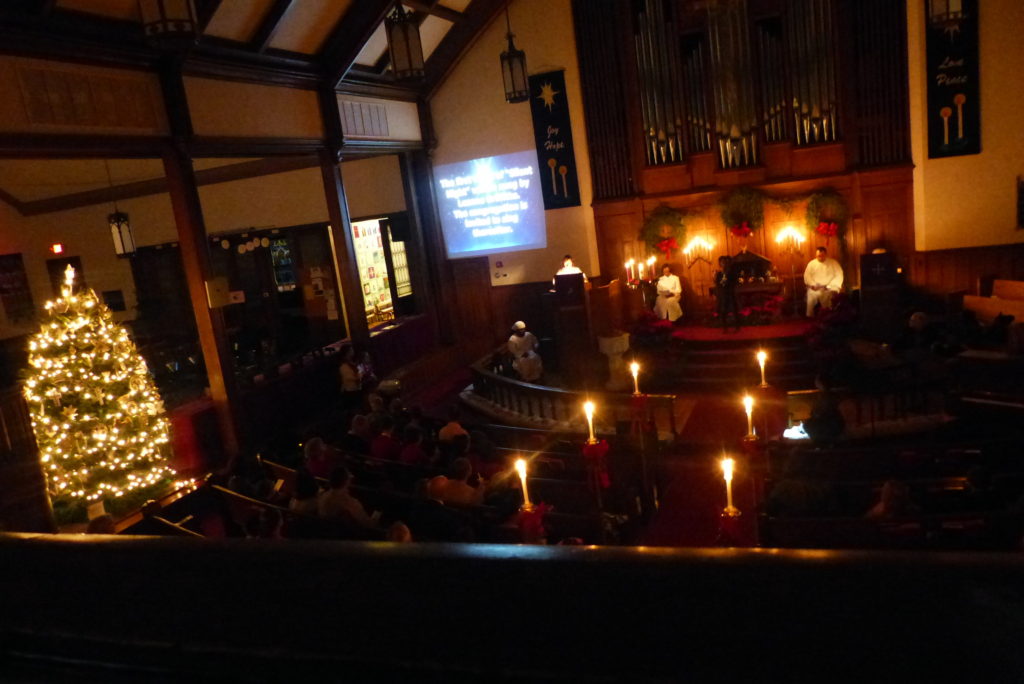
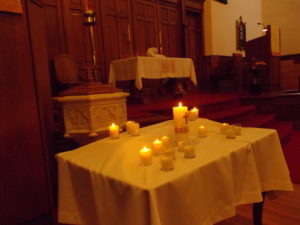 Here are some videos of the very inspiring worship on Sunday, November 6, at 9:30 a.m. It was All Saints Sunday, and the Children’s Choir sang the introit.
Here are some videos of the very inspiring worship on Sunday, November 6, at 9:30 a.m. It was All Saints Sunday, and the Children’s Choir sang the introit. On September 12, two daughters with ancestral roots at Princeton United Methodist Church paid a visit to the chapel dedicated to the pastors in their family. Jane Corson Henry and Dorothy Corson Jones are the great granddaughters of Rev. Pennington Corson
On September 12, two daughters with ancestral roots at Princeton United Methodist Church paid a visit to the chapel dedicated to the pastors in their family. Jane Corson Henry and Dorothy Corson Jones are the great granddaughters of Rev. Pennington Corson  (who served 1899-1904), granddaughters of Rev. Alexander Corson (1929-1932), and daughters of Rev. Lynn Corson. ‘All were pastors here; their father served this church from 1942 to 1950.
(who served 1899-1904), granddaughters of Rev. Alexander Corson (1929-1932), and daughters of Rev. Lynn Corson. ‘All were pastors here; their father served this church from 1942 to 1950.


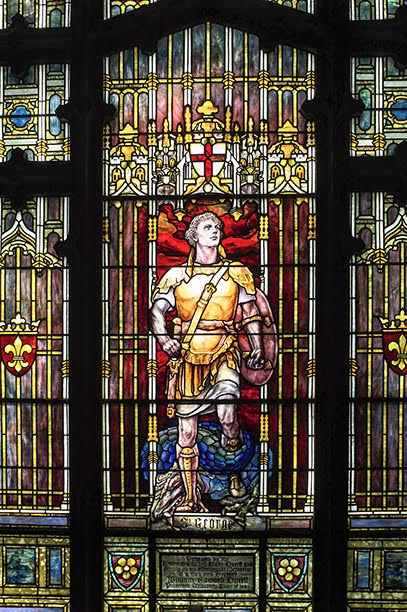
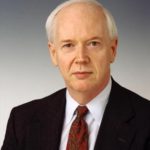 poet Edmund Spenser, for example, named the Redcrosse Knight as the champion of holiness in The Fairie Queen,” says Duncan. “The knight and Una, representing the true religion, are finally betrothed after he has killed the dragon. The figure Gloriana represents glory in the abstract, and Queen Elizabeth I in particular. ” St. George became the patron saint of England in the 14th century and is now the patron saint of Moscow. Many of the most famous artists depicted St. George, and almost every major museum has a painting of him.
poet Edmund Spenser, for example, named the Redcrosse Knight as the champion of holiness in The Fairie Queen,” says Duncan. “The knight and Una, representing the true religion, are finally betrothed after he has killed the dragon. The figure Gloriana represents glory in the abstract, and Queen Elizabeth I in particular. ” St. George became the patron saint of England in the 14th century and is now the patron saint of Moscow. Many of the most famous artists depicted St. George, and almost every major museum has a painting of him.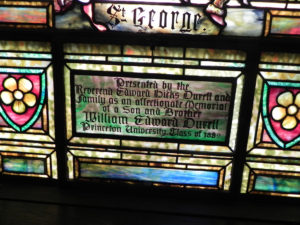
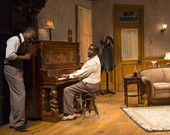 McCarter Theater’s acclaimed August Wilson play, “
McCarter Theater’s acclaimed August Wilson play, “